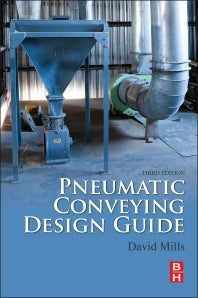Freshly Printed - allow 10 days lead
Couldn't load pickup availability
Pneumatic Conveying Design Guide
This new and updated edition combines proven industrial design with data, case studies, and professional insights for the design and operation of pneumatic conveying systems.
David Mills (Author)
9780081006498, Elsevier Science
Paperback / softback, published 30 November 2015
806 pages
23.4 x 19 x 4.9 cm, 1.62 kg
Pneumatic Conveying Design Guide, 3rd Edition is divided into three essential parts, system and components, system design, and system operation, providing both essential foundational knowledge and practical information to help users understand, design, and build suitable systems. All aspects of the pneumatic conveying system are covered, including the type of materials used, conveying distance, system constraints, including feeding and discharging, health and safety requirements, and the need for continuous or batch conveying. This new edition also covers information on the other conveying systems available and compares them to this method. The existing content is brought up-to-date and the references are expanded and updated. This guide is an almost encyclopedic coverage of pneumatic conveying and as such is an essential text for both designers and users of pneumatic conveying systems. Each aspect of the subject is discussed from basic principles to support those new to, or learning about, this versatile technique.
Systems and Components:Introduction to pneumatic conveying and the guide.Review of pneumatic conveying systems.Pipeline feeding devices.Pipelines and valves.Air movers.Gas-solid separation devices.System selection considerations. System Design:Air flow rate evaluation.Air only relations.Conveying characteristics.Conveying capability.Material property influences.Pipeline scaling parameters.Design procedures.Case studies.First approximation design methods.Multiple use systems. System Operation:Troubleshooting and material flow problems.Optimizing and up-rating of existing systems.Operating problems.Erosive wear.Particle degradation.Moisture and condensation.Health and safety. Appendix 1: Determination of relevant material properties.Appendix 2: Additional conveying data.Index.
Subject Areas: Structural engineering [TNC], Dynamics & vibration [TGMD4], Mechanical engineering [TGB], Technical design [TBD]


